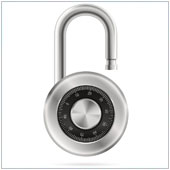
To meet this challenge, a number of companies have developed password management systems. Below is a brief overview of the different types of systems.
1. Cloud or Internet-based
These systems are usually cloud based and accessed through an app or browser plugin. The app stores your passwords, or generates one for you, and will automatically enter it when you visit a site. These systems are great for breaking the one password habit, however, because they store all of your passwords in one place, they could become a target for hackers.
2. Cloud or Internet-based with two-factor authentication
The next step up from the cloud-based password management system is one that supports two-factor authentication. Your passwords are still stored in the cloud, but with two-factor authentication you will need to provide a second piece of information before your password is retrieved. Many of the cloud based password systems have this as an option in their premium offerings.
The cloud based systems are a good idea if you use more than one computer on a regular basis, or if you work from outside of the office.
3. Computer-based
Computer-based password management systems work similarly to the cloud versions, only the passwords are stored on your computer, and accessed using a master password. Because most hackers usually don’t go after individual hard drives – they would have to get through your network first, and then find the program and try to break the password – the chances of your passwords being exposed are minimized.
The only problem with systems like these is that you normally have to log in for the service to work. If you forget to log out, another person could use your computer and easily access everything for which you have stored a password. However, for the manager who wants a secure system, computer based choices might be a better option than cloud based versions.
4. USB-based
There are a number of USB devices available that have a smart card in them which can store passwords. When you plug the USB in to your computer, the software on the USB can input the stored passwords when needed. These devices are typically more expensive than a standard USB drive, with some costing as much as USD$100, but they offer the highest level of security, as your passwords travel with you.
The main downside to these devices is that they are small and easy to misplace or lose, and retrieving all those lost passwords can be a real pain.
If you are looking for a better way to keep track of your passwords, please contact us today to see how we can help.

